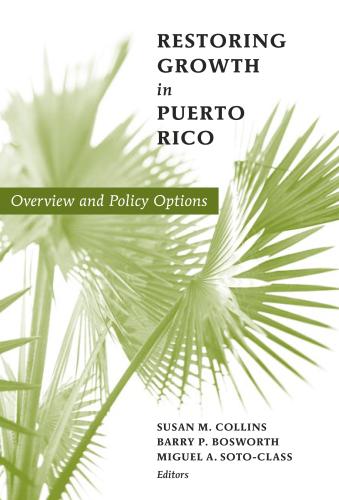This op ed was originally published by Project Syndicate.
With 2021 still young, and hope in the air thanks to new COVID-19 vaccines and a new occupant of the White House, we can finally stop covering our eyes in horror and peer furtively into the future. As the decade unfolds, which countries are likely to be the biggest economic success stories?
My bet is on South Korea, Vietnam, and Mexico, three countries at markedly different stages of development. South Korea is an advanced economy, while Vietnam is what the World Bank calls a lower middle-income economy, like India or Bangladesh. Mexico, an upper middle-income country like Colombia, Botswana, or Indonesia, is somewhere in between. I predict that each of these economies will outperform others in its cohort over the next ten years.
South Korea is the safest pick of the three. Beginning in the late 1970s, during the last years of Park Chung-hee’s presidency, its economy gathered steam and sustained a two-decade-long growth run, before hitting the roadblocks thrown up by the 1997 East Asian financial crisis.
Rich countries have less growth potential than poorer ones. But among rich countries, South Korea’s prospects stand out—mainly because of its investment in human capital. With 3,319 patent applications per million population in 2019, South Korea is head and shoulders above other countries. Japan had the second-highest number, with 1,943, while China and the United States had 890 and 869, respectively. In April 2019, South Korea became the first country to launch a nationwide 5G campaign, and South Korean firms plan to capture 15 percent share of the global 5G market by 2026.
Moreover, South Korea has gone some distance toward solving a market failure that plagues all countries: teacher selection. As many studies, such as by Abhijit Banerjee and Andrew Newman, and Oded Galor and Joseph Zeira, have shown, schoolteachers are typically paid less than they should be, which I believe is because the effect of a good education cascades down to future generations. Good teachers are thus a bit like good climate policy: Future generations benefit, but they have no influence over today’s decisions.
South Korea has drawn some of its most talented people into teaching, and schoolteachers are among the country’s richest people. The story of Cha Kil-yong, who earned $8 million in one year teaching school mathematics online, has few parallels anywhere.
President Moon Jae-in’s efforts to create a more equitable and inclusive society also augur well. Acts like moving the president’s official residence from the palatial Blue House to a more ordinary government complex in downtown Seoul are symbolic but important gestures. My expectation is that South Korea’s per capita income will overtake that of Japan within the next 10 years.
Vietnam had a per capita income of just $1,297 in 2010, when it was one of the world’s three fastest-growing economies, along with India and China, both of which were richer. The country maintained its impressive growth rate since then, and its per capita income now exceeds India’s.
This success story began in 1986, when the Communist Party of Vietnam’s Sixth National Congress adopted the Doi Moi policy of moving away from a command economy to a more market-oriented model. In recent years, Vietnam has cut its tariff rates, opened its borders to trade and foreign investment, and invested heavily in human capital.
Vietnam’s impressive management of the COVID-19 pandemic has given the economy an additional shot in the arm. The country’s low crude mortality rate of 0.4 COVID-19 deaths per million people and 2.9 percent economic growth in 2020, a year when most economies shrank, are remarkable achievements. The steady inflows of foreign investment that Vietnam is now attracting could make it one of the world’s leading manufacturing hubs.
Unlike Vietnam, Mexico is reeling under the pandemic, and President Andrés Manuel López Obrador (AMLO), the latest world leader to be infected, must take responsibility for some of the mismanagement. Nevertheless, since AMLO became president in 2018, there has been a resurgence of hope. He initiated what he called Mexico’s “Fourth Transformation,” a progressive economic agenda that aims to promote growth and remove some egregious elite privileges. To emphasize this, AMLO refused to live in the presidential mansion, Los Pinos, opting for a simpler residence.
Along with Vietnam, Mexico has the greatest potential to become a global manufacturing hub. The United States-Mexico-Canada Agreement (USMCA), which entered into force last year, can further these three economies’ integration. In fact, with the U.S. and Canada providing capital and advanced technology, and Mexico marshaling its ample labor force, the region could experience a major resurgence and outcompete China. Now that U.S. President Joe Biden has taken office, trilateral relations should improve. All three countries will benefit, but Mexico will gain the most, because it has more scope for catch-up growth.
Finally, there is the puzzling case of India. Until a few years ago, the country’s rapid growth of about 9 percent per year made it a major global economic success story. But the economy has since slumped, with falling growth from 2016 to 2020—the longest slide since independence.
Yet, fundamentally, India is one of the strongest emerging economies. It has a world-class information-technology sector, a strong pharmaceutical industry, and a small segment of highly educated workers. The stumbling block is the country’s divisive politics, which have eroded trust and caused the investment rate to fall steadily over the last few years.
If India can clean up its political act, it can be a global growth leader. But that is a big “if.” At least for now, it puts India out of the running when it comes to picking this decade’s likely economic winners.
The Brookings Institution is committed to quality, independence, and impact.
We are supported by a diverse array of funders. In line with our values and policies, each Brookings publication represents the sole views of its author(s).










Commentary
Op-edThis decade’s growth champions
February 2, 2021